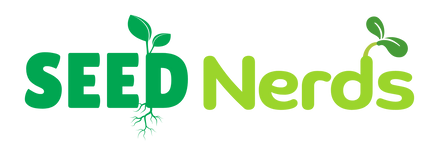
Blue Flax Seeds – Heirloom, Perennial Wildflower, Non-GMO
Blue Flax Seeds (Linum lewisii) are a hardy perennial wildflower native to North America. Commonly known as Lewis Flax Flower or Perennial Blue Flax, this plant is admired for its delicate, shimmering blue flowers that bloom from late spring to mid-summer. With its ability to thrive in various soil types, withstand drought conditions, and resist deer, Blue Flax Seeds are a low-maintenance yet stunning addition to any garden or meadow.
This heirloom wildflower seed variety is open-pollinated, meaning it naturally reproduces through wind and pollinators like bees and butterflies. It can be directly sown in fall or spring and is excellent for pollinator gardens, prairie restorations, and natural landscaping. The long, slender stems can reach up to 2 feet in height, making it a visually appealing choice for any space.
Why Grow Blue Flax Seeds?
These Seeds provides multiple benefits, including low water requirements, adaptability, and beautiful floral displays. Whether planted alone or alongside other wildflowers, this heirloom variety is a pollinator-friendly and environmentally beneficial plant.
Key Features:
-
Heirloom Wildflower Seeds – Naturally pollinated by wind and insects.
-
Drought-Tolerant & Hardy – Thrives in low-water conditions.
-
Perennial Blue Flax – Returns each year with minimal maintenance.
-
Attracts Pollinators – Supports bees, butterflies, and beneficial insects.
-
Resistant to Deer – Ideal for wildlife-friendly gardens.
-
Beautiful Floral Display – Produces vibrant, shimmering flowers.
How to Grow
1. Soil Preparation
Blue Flax thrives in well-draining soil with a pH between 5.5 and 7.5. It adapts well to poor, rocky, or sandy soils, making it ideal for prairie-style gardens and wildflower meadows.
2. Planting Instructions
-
Direct Sowing: Scatter seeds outdoors in fall or early spring for best germination.
-
Indoor Starting: Start seeds 6-8 weeks before the last frost, then transplant.
-
Sowing Depth: Lightly press seeds into the soil ¼ inch deep.
-
Spacing: Space plants 8-12 inches apart to allow for full growth.
-
Watering: Keep soil lightly moist during germination, then reduce watering.
3. Care and Maintenance
-
Sunlight: Requires full sun (at least 6 hours daily) for optimal growth.
-
Mulching: Helps retain moisture and suppress weeds.
-
Pruning: Deadhead spent flowers to encourage continuous blooming.
-
Pest Control: Resistant to most pests; monitor for aphids if needed.
4. Blooming & Seed Collection
-
Blooming Period: Late spring to mid-summer.
-
Seed Harvesting: Collect dried seed pods for future plantings.
-
Self-Seeding: If left undisturbed, Blue Flax Seeds will naturally reseed and spread.
Ecological & Environmental Benefits
Seeds are an essential plant for supporting biodiversity in natural landscapes. Their ability to thrive in dry conditions and attract pollinators makes them an excellent choice for eco-friendly gardens.
Environmental Benefits:
-
Pollinator Magnet – Provides nectar for bees and butterflies.
-
Erosion Control – Strengthens soil structure and prevents erosion.
-
Drought Resistance – Requires minimal watering once established.
-
Wildlife Habitat – Supports a healthy ecosystem with minimal upkeep.
Flax in Landscaping & Garden Design
This perennial blue flax variety is perfect for:
-
Prairie Restorations – Adds native beauty to open landscapes.
-
Pollinator Gardens – A favorite of bees, butterflies, and hummingbirds.
-
Rock Gardens – Grows well in poor, rocky soils.
-
Cottage Gardens – Provides delicate floral accents.
-
Low-Water Landscaping – Ideal for xeriscaping and drought-prone areas.
Common Pests and Diseases
While Seeds are low-maintenance, they may experience occasional challenges:
-
Aphids – Use neem oil or insecticidal soap for control.
-
Root Rot – Avoid overwatering and ensure well-draining soil.
-
Powdery Mildew – Ensure good airflow and avoid crowded plantings.
Interesting Facts About Blue Flax Seeds
-
Self-Seeding Plant: Flax naturally reseeds, allowing it to return each year.
-
Wildlife Support: Flax provides essential food for pollinators and beneficial insects.
-
Medicinal Uses: Historically, Lewis Flax Flower has been used for natural remedies and herbal infusions.
About Our Seeds
Our seeds are carefully selected to ensure high germination rates and plant vitality. We take pride in offering seeds that are:
-
Non-GMO & Open Pollinated Wildflowers – Perfect for eco-friendly gardening.
-
Untreated & Chemical-Free – Safe for pollinators and the environment.
-
Eco-Friendly Packaging – Resealable packets made from recycled materials.
-
Comprehensive Growing Guide – Included with every purchase.
Package Quantity
Each packet contains 5g (Minimum 300 Seeds), providing a generous supply for multiple plantings.
Customer Reviews and Testimonials
Gardeners love our Seeds for their ease of growth, drought tolerance, and pollinator-friendly nature. Here’s what they say:
-
"This plant thrives in my wildflower garden and comes back every year!"
-
"Beautiful flowers that attract bees and butterflies—so easy to grow!"
-
"Perfect for my dry, sandy soil. It blooms beautifully without much water!"
Order Today!
Enjoy the natural beauty, resilience, and ecological benefits of Blue Flax in your garden. Whether you're planting for wildflower meadows, erosion control, or pollinator support, these seeds will provide a lasting impact on your landscape.




